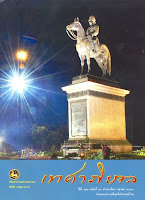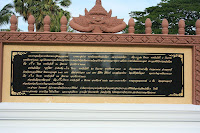 Both the Department of Provincial Administration as well as amphoe.com recently placed "adverts" on their websites linking to their own publications, including some monthly magazines. Both link to another website called amphoeyim.com (อำเภอยิ้ม), meaning "district smile".
Both the Department of Provincial Administration as well as amphoe.com recently placed "adverts" on their websites linking to their own publications, including some monthly magazines. Both link to another website called amphoeyim.com (อำเภอยิ้ม), meaning "district smile".On that site there seem to be two magazines, one named Amphoeyim MAG same as the website, but it seems to be nothing interesting - one of the few things I can recognize is a horoscope - so I presume it's a magazine to entertain the employees at the various offices under the provincial administration. The second one is much more interesting - but sadly unlike the first only the title page and the preface are available online. At DOPA it also has the table of contents for some older issues (1998-2004), but scanned at a rather low resolution and thus hardly readable. This magazine is named Thesaphiban (นิตยสารเทศาภิบาล), the term used for the Thai administrative reforms at the beginning of the 20th century. In fact, that magazine dates back to these times, as was created by Prince Damrong to publicize news on his reforms to his subordinates and the local officers. The first issue was published on April 1 1906, so it celebrated its centenary just shortly ago. In the book "Provincial Administration of Siam" on these reforms by Tej Bunnag many footnotes refer to this magazine as a source. So it's interesting to see this magazine is still around after such a long time.
Though the contents is probably still way beyond my Thai reading abilities, it is still sad that this magazine is only available in the paper edition, even though it is produced by the government and thus not printed for profit they don't make it easily accessible online. I don't recall noticing this magazine in the bookstores before, but now I know about it I will try to catch myself a copy next time I'm in Bangkok for sure.







